Think about how the stays support a mast on a boat and how cables support a bridge – that’s what your core muscles do for your spine. Your abdomen and back muscles, which make up your “core,” are super important for keeping your spine healthy every day.
They’re a crucial part of any workout routine that’s meant to strengthen your back, whether it’s already healthy or needs a little extra TLC. Just like how you take care of your heart with cardio exercises, you’ll see the benefits of core strength for back support. It is so important.
I firmly believe in the critical role core muscles play in supporting the back, essential for anyone looking to enhance their physical health and prevent back pain. “Our core muscles are the unsung heroes of our body’s stability system,” I often say, highlighting their vital role that extends beyond the abdominal area.
Core strength for back support and stability
Core muscles are not just about sculpting our midsection; they are crucial in supporting our entire spine. I compare core muscles to the cables of a bridge, essential for maintaining structural integrity. “Whether you’re an athlete or someone who spends a lot of time at a desk, core stability is key in distributing the load across your body to avoid undue strain on your spine,” I explain.
Key Core Muscles That Support the Spine
The core muscles, including the multifidus, transverse abdominis, pelvic floor, and diaphragm, work together to stabilize and protect the spine. When these muscles are strong and coordinated, they can aid in the reduction of low back pain and improve balance and stability. Simple core strengthening exercises, such as breathing for core control and the pelvic elevator, can help activate and strengthen these muscles.
- Transverse Abdominis: This muscle is the deepest layer of the abdomen, wrapping around your spine for stability and support.
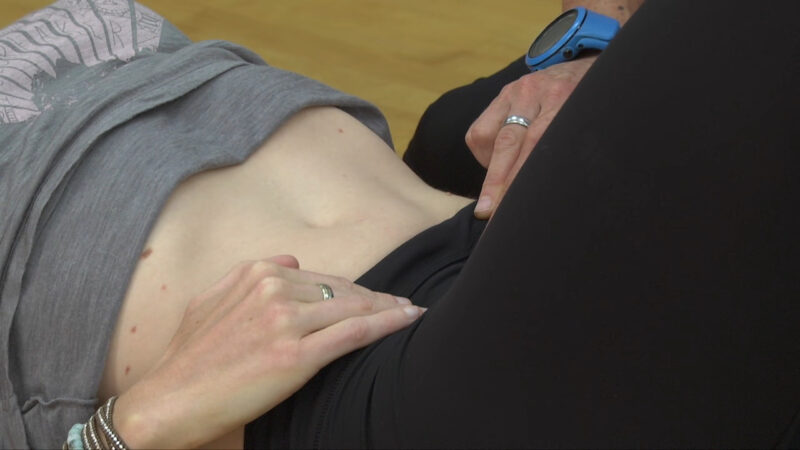
Take a deep breath in and slowly exhale out of your mouth. As you exhale, draw in your lower abs and engage your pelvic floor muscles. You should notice your transversus abdominis contracting under your fingers. Continue to breathe normally as you hold your belly in.
- Multifidus: Located along the spine, the multifidus is critical in stabilizing the vertebrae and maintaining spinal alignment.
When contracting bilaterally they extend the spine, while unilateral contraction aids lateral flexion of the spine to the same side and rotation of the spine to the opposite side.
- Erector Spinae: These muscles run along your spine, aiding in straightening and rotating the back.
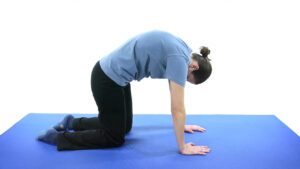
The function of the spinal erectors is to move the vertebral column. Bilateral contraction of these muscles extends the spine, while unilateral contraction causes lateral flexion (ipsilateral). They also help to maintain posture by steadying the spine on the pelvis during walking.
- March (beginner): Lie on your back with both knees bent, and feet flat. Tighten your lower abdominals and pelvic floor by pulling your belly button up and toward your spine. Hold that position and lift the left foot off the floor to a 90-degree angle. Return to the original position, then repeat with the right leg/foot without losing the core contraction. Return to the start position and relax your abdominals. Repeat 10 times on each side. Perform 2 times per day.
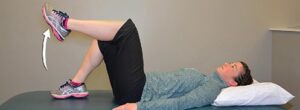
- Heel taps (mid-level): Lie on your back and bring your legs up together in a 90-degree position to your body. The knees are bent to 90 degrees. Keeping this position with your abdominals tight toward your spine, heel tap one side down to the floor, bring it back up, then tap the other side. Remember to keep your abdominals tight throughout the process. Repeat 10 times on each side. Perform 2 times per day.
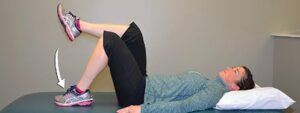
- Dead bug (mid-level): Lie on your back with your knees bent and arms extended to the ceiling. Tighten toward your spine. Hold that position throughout this exercise. Extend the right leg outward, making it straighter, while extending the left arm overhead. Hold for 5 seconds, then return to the original position. Repeat to the opposite limbs. Repeat 10 times on each side.
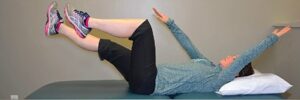
- Lower abdominal (advanced): Lie on your back with your knees bent, and feet flat. Squeeze a pillow or ball between your knees. Tighten your abdominals by pulling your belly button up and in toward your spine, then lift your knees toward your chest. Do not take your knees past a 90-degree position in relation to your body. Lower and repeat 10 times. Never let your lower back come off the floor/ table. Increase repetitions if this does not create pain.
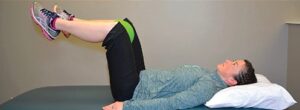
- Deep spine stabilizers (beginner): Lie on your side with your hip and knees in a 90-degree position. Make sure the shoulders are in a straight line with the hips. Without moving your hips, lift your ankles off the table about 2 inches. Return slowly to the start position. Repeat 10 times on each side.

- Side plank: Lie on your side with your elbow underneath you. Prop up on your elbow and your knees while keeping your body in a straight line. Tighten abdominal and pelvic floor muscles by pulling up and in along with squeezing your gluteals together. Hold 10 seconds and repeat 5 times.
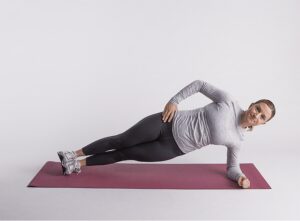
- Modified plank: Lie on your stomach and prop up on your elbows. While keeping your abdominal and pelvic floor muscles pulled up and in, raise up on your knees and elbows. Maintain this position for 10 seconds and repeat 5 times. Increase your hold time as the exercise becomes easier.
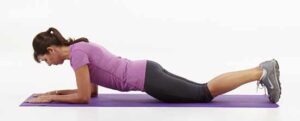
- Plank: Lie on your stomach with your elbows propped up underneath you. Your toes should be pointed to the floor. Raise up onto your elbows and toes by pulling your abdominals up and in and squeezing your gluteal muscles. Keep your back straight.
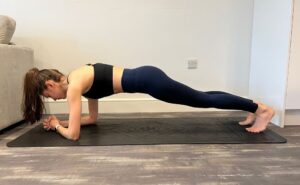
“These muscles work together to maintain your posture and enable safe movement,” I emphasize, pointing out their importance.
How Core Strength Affects Back Health
Weak core muscles can lead to improper loading of the spine, resulting in back pain and discomfort.
“A strong core serves as a foundation, distributing stresses through the muscular system rather than the spine alone,” I note.
I also mention that strong core muscles help prevent inefficient movement patterns that could lead to injuries.
Exercises to Enhance Core Strength for Spinal Support
I recommend several exercises that effectively target the core, promoting spinal health:
- Pelvic Tilts: These engage and strengthen the lower abdominal muscles.
- Deep Breathing Techniques: These enhance core control and diaphragmatic strength through focused, controlled breathing.
- Balance Exercises: These improve core stability and integration into daily movements, like standing on one leg or using balance boards.
Given the complexity of the back and core systems, I always advise consulting with a fitness or healthcare professional before starting any new exercise regimen.
“Professional guidance can help tailor exercises to your specific needs, ensuring you strengthen your core safely and effectively,” I suggest.
Summary
In conclusion, your core strength for back support is super important, helping you have good posture, and keeping your spine healthy. If you do core-strengthening exercises regularly, you can improve your quality of life by reducing your risk of back pain and making it easier to move around.
I highly recommend that everyone makes core training a part of their healthy lifestyle. My insights show just how important core strength is and offer practical advice for taking care of these muscles that are so crucial to our overall health and well-being.

